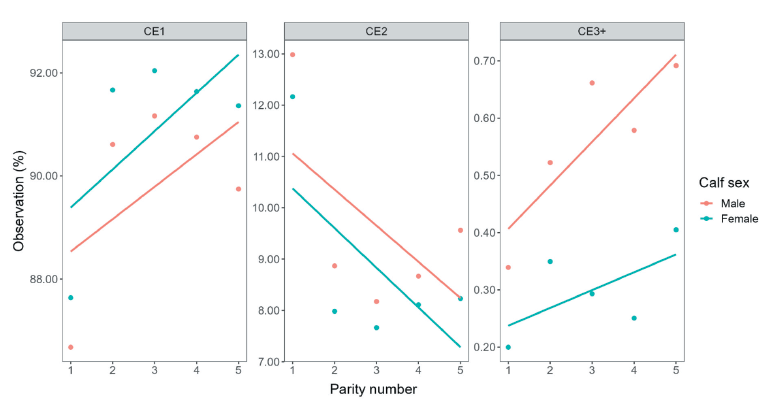Abstract
Calving ease is an important reproductive trait in dairy production. We investigated the first five parities calving ease (CE) scores and various factors to identify their relationships with CE in Korean Holstein cows. We analyzed the 83,943, 69,120, 31,500, 29,003, and 9,361 records from parity 1 through 5 provided by Dairy Cattle Improvement Center (DCIC), Korea. The categorical CE scores (1 to 5) were also linearly transformed via the snell procedure and analyzed alongside actual scores. A generalized linear model or GLM analysis was performed in the R software package to estimate the significance of predictor variables. The complete models included the fixed effects of calf sex (SEX), calf size (SIZE), gestation length group (GLEN), dam calving age (DAGE), calving year (YR), calving season (SEA), and calving herd (HERD). B0th actual and linear-transformed phenotypes were fitted separately for individual parity datasets. CE rates differed across parity. Male calves tend to have larger body sizes and longer gestation periods. As a result, males were also more inclined to extreme CE. However, longer gestation lengths, irrespective of sex, were also associated with greater CE. The GLM analysis showed that the effect of HERD, SIZE and YR are significant across parities (
Figures & Tables

Fig. 1. Distribution of % male and female calves with calving difficulty levels in three calf-size categories according to parity (CE1, normal calving; CE2, slight assistance; CE3+, moderate, difficulty and extreme difficulty calving combined).


